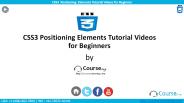Learner Centered Astronomy Lecture Tutorials and Ranking Tasks - PowerPoint PPT Presentation
1 / 21
Title:
Learner Centered Astronomy Lecture Tutorials and Ranking Tasks
Description:
Population students enrolled in the introductory astronomy ... Hake's Normalized Gain = 0.41 ('moderately large effect') Cohen's d = 0.62 ('Large effect' ... – PowerPoint PPT presentation
Number of Views:162
Avg rating:3.0/5.0
Title: Learner Centered Astronomy Lecture Tutorials and Ranking Tasks
1
Learner Centered Astronomy Lecture Tutorials
and Ranking Tasks
- Ed Prather and Gina BrissendenUniversity of
Arizona - Center for Astronomy Education
- Sponsored by the NASA Navigator Public Engagement
Programs - http//astronomy101.jpl.nasa.gov
2
Arizona Astronomy Education Study
- Population students enrolled in the
introductory astronomy course for non-science
majors - Instrument used A 68 items research-based
multiple choice questionnaire - Pre-Course two forms, AB, which each contained
a subset of questions - Post-Lecture questions administered in subsets
that directly reflected topic of lecture
3
Celestial Motion of Objects
- Before Lecture (N42) 2 correct
4
Celestial Motion of Objects
- Before Lecture (N42) 2 correct
- After Lecture (N 135) 19 correct
5
Arizona Astronomy Education Study
- Instrument used A 68 items research based
multiple choice questionnaire - Pre-Course two forms, AB, which each contained
a subset of questions - Post-Lecture questions administered in subsets
that directly reflected topic of lecture
Pre-Course mean 30 (nA39,nB42) Post-Lecture
mean 52 (n 100)
6
So What Can Be Done?
- Lecture more loudly?
- Its not what the instructor does that matters
rather, it is what the students do that matters - Create a learner-centered environment that
promotes the intellectual engagement - For large-enrollment lectures, we created
Lecture-Tutorials for Introductory Astronomy
7
(No Transcript)
8
Development of Lecture-Tutorialsfor
Introductory Astronomy
- Based on the topics faculty most often cover
- Require 15-minutes and are designed for easy
implementation into existing traditional lecture
courses - Socratic-dialogue driven, highly-structured
collaborative learning activities designed to - elicit misconceptions
- confront naïve, incomplete, or inaccurate ideas
- resolve contradictions
- demonstrate the power of THEIR conceptual models
9
Idealized Classroom Implementation
- Professor lectures for approximately 20 minutes
on core ideas of the topic to prepare students
for working on the activity - Students are posed a conceptually challenging
question on the presented lecture material to set
the stage for the activity to come - Class is divided into pairs or small groups and
instructed to work collaboratively and reach
consensus on the questions presented in the
lecture-tutorial activity - Professor debriefs the activity interactively
highlighting the difficulties in reasoning and
common problems - Professor returns to lecture mode on next course
topic
10
Drum roll please
Lecture-Tutorial Motion
11
(No Transcript)
12
- What Do You Do During a Small Group Activity?
- This is the chance to actually get to talk with
your students about their learning of astronomy. - Nudge groups with helpful question to steer their
group discussion in the right direction. - Ask two nearby groups to check their answer and
to account for any differences to facilitate
class interactions. - Pull in non-participants by asking them what and
why the other group members answered the way that
they did. - Offer thought provoking questions that help
students engage with the concepts. - Circle the wagons afterward ( i.e., debrief )
- Always in pursuit of the TEACHABLE MOMENT
13
Celestial Motion of Objects
- Before Lecture (N42) 2 correct
- After Lecture (N 135) 19 correct
- After Lecture Tutorial (N134) 66 correct
14
Arizona Astronomy Education Study
- Post Lecture-Tutorial questions administered in
subsets
- Pre-Course mean 30 (nA39,nB42)
- Post-Lecture mean 52 (n 100)
- Post-Lecture Tutorial 72 (n 100)
15
Student Feedback from Class Survey 4 Days Ago
- How effective have Lecture Tutorials been in
helping you learn? - 1 Very Ineffective
- 5 Very Effective
- Class Average 4.53
- 1 0
- 2 0
- 3 12
- 4 23
- 5 65
16
References
- Prather, E. E., Slater, T. F., Adams, J. P.,
Bailey, J. M., Jones, L. V., Dostal, J. A.
2003, "Research on a Lecture-Tutorial Approach to
Teaching Introductory Astronomy for Non-Science
Majors," Astronomy Education Review, 3(2), 122. - Brogt, Erik. 2007, A Theoretical Background on a
Successful Implementation of Lecture-Tutorials,
Astronomy Education Review, 6(1), 50-58.
17
But wait there is more!!
- For those of you who prefer to emphasize
quantitative or mathematical reasoning - Ranking
Tasks
18
Results over Eight Core Topics
Core Topics Seasons Keplers Laws Star Magnitude
Distance Motion of the Sky Phases of the
Moon Gravity Luminosity of Stars Doppler Effect
( N 100 )
100
75
Percent Correct
50
25
0
Pretest
Post-Lecture
Post-Ranking Tasks
Study Trial
19
Results Averages for Eight Core Topics
( N 100 )
100
More difficult gains!
75
77
Best results with lecture!
Percent Correct
50
61
Post-Lecture to Post-Ranking Task Hakes
Normalized Gain 0.41 (moderately large
effect) Cohens d 0.62 (Large effect)
25
32
0
Pretest
Post-Lecture
Post-Ranking Tasks
Study Trial
20
Integrating with Clickers and Voting Cards
- Clickers and Voting Cards can be used
- Before activity to ask conceptually challenging
question to set the stage - After activity to assess learning
21
Possible Discussion Topics
- Other experiences or thoughts about LTs and RTs?
- LTs in other disciplines?
- Making your own Socratic-Dialogue Inducing
activities































